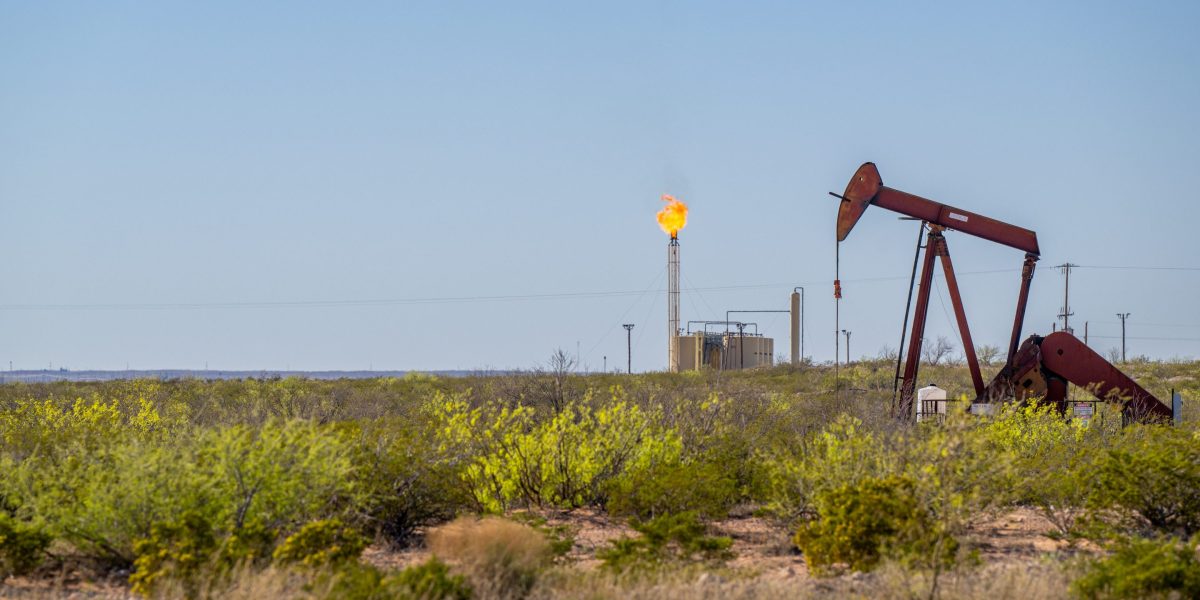
Sometimes supply and demand get so out of whack that a producer has to pay a consumer instead of the other way around.
That’s what has been happening more and more frequently in West Texas, where the closing price of natural gas has been negative for 57 trading days this year through the end of July, the New York Times pointed out this week.
That’s 37% of the trading days during that span and more than six times the number of negative days seen in all of 2023, according to a dataset from S&P Global Commodity Insights for the daily price at the Waha Hub near the Permian Basin.
In fact, Waha prices have been negative a record number of times year to date, according to Reuters. At the end of July, Waha gas closed at -$0.845 per million British thermal units and sank as low as -$4.595 in May.
Last year, Waha natgas prices were negative on nine trading days. In 2022, when global prices spiked after Russia invaded Ukraine, there were three such days, and 2021 saw none.
Even in 2020, when the COVID-19 pandemic turned global markets upside-down and the price of U.S. crude oil went negative for the first time ever, there were only nine days when Waha prices were negative, according to S&P Global Commodity Insights data.
To be sure, the benchmark price for U.S. natural gas, which is set at the Henry Hub in Louisiana, has not tumbled into negative territory. And in Europe, natural gas prices jumped to 2024 highs this past week after Ukrainian troops crossed into Russia and claimed the capture of a key gas transit hub.
U.S. retail customers also are not being paid to burn natural gas in their homes. But operators of natural gas-fired power plants in West Texas, such as Xcel Energy, have been paid to take some supply.
That’s due to specific regional factors, namely Waha’s proximity to the Permian Basin, which is the epicenter of the U.S. shale boom.
U.S. oil production has been soaring to record highs this year, and as frackers unlock vast amounts of crude, natural gas comes out of the ground too—more than can be delivered to other areas with greater demand.
Previous spells of negative prices in West Texas this year came as bottlenecks created a glut of supply. In April, a segment of a pipeline system was shut down following a fire.
Amid the weak pricing, energy companies have signaled recently that they are curbing gas production. And plans for additional pipelines should help ease the supply-demand imbalance in West Texas, making it easier to send natgas to export hubs along the Gulf coast.
Excessive heat this summer has also boosted demand for electricity, which has added to demand for natural gas. But an overhang of supply has prevented them from rising higher.
“Blistering heat across the western US is pushing regional gas-fired power burn toward record highs again but elevated storage levels are keeping a lid on prices, even in the notoriously volatile Southern California gas market,” S&P Global said on Monday.

